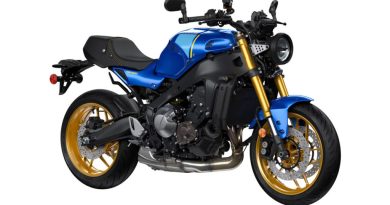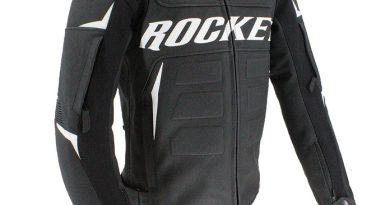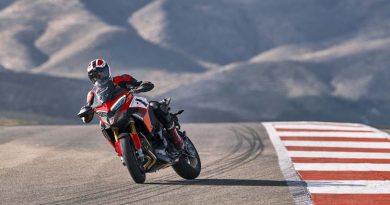All About Ducati 900SS History – Mega Beauty or Mega Beast
In motorcycle terms, 1974 was the year of mega beasts. For so long watching from the sidelines churning out small capacity commuters, Japanese manufacturers threw off the gloves and joined the big-bore fight.
Suzuki had the flying kettle, a 750cc water-cooled triple two-stroke. Meanwhile, Kawasaki’s response to the arms race was the rip-snorting 900cc Z1. Honda’s groundbreaking CB750 was still turning heads. Despite Yamaha being content with two-stroke dirt bikes, they targeted their XS650 fair and square at the British market.
While on the subject of Brits, in 1974, Triumph Meriden was still producing the 750cc Bonneville and Trident and Norton’s 850cc Commandos, was also selling well.
Which leads us on to Italy? The major players here were Moto Guzzi, Laverda, MV Agusta, and Ducati. Moto Guzzi was busy chasing the American bike market with their Eldorado bagger. At the same time, Laverda’s 1000cc SC was the top-speed king offering a massive 140-mph.
That leaves us to consider MV and Ducati and at last, the pieces of the jigsaw fit, leading us to the creation of the legendary Ducati 900SS, MV Agusta started manufacturing motorcycles out of necessity after their aircraft factory was prohibited from making planes following WWII. They began by building cheap commuter models. However, within a couple of years, MV became involved in the world of motorcycle racing.
MV Agusta dominated the European road and race tracks across three decades with a staggering 270 Grand Prix wins. After developing the first production inline four-cylinder engine, their 500-4 with Italian motorcycle racer Giacomo Agostini behind the bars became unbeatable.
Ducati Re-Enter the Fray
1972 race Ducati’s arrive at Imola. Photo credit: Unknown.
In the early ’70s, after missing from the racetrack for a decade, Ducati decided it was time to re-enter the fray. Creating a special 500cc L-shaped V-twin race bike, they took on the all-conquering MV Agusta. This head-to-head should have made for a great story. Unfortunately, though, Ducati got a sound thrashing.
Ducati didn’t come close to threatening MV, but fate was about to step in. Ducati had been developing a 750cc version of the engine, and on the announcement of an all-new formula 750 race series for production-based bikes, it was Carpe Diem for Ducati.
Photo: Ducati
The race, being 200-miles of the Imola circuit, would, in theory, suit the Ducati’s long legs. However, two minor problems needed sorting. Firstly, legendary engineer Fabio Taglioni had only one month to create an entire race bike. Secondly, not one pro racer would touch the motorcycle due to its untested nature, the ferocity of the factory-backed competition, and the event’s prestige.
To cut a long and fascinating story short, legendary British racer Paul Smart was finally offered the ride but turned it down flat. However, when Ducati called him for a second time to further argue their case, Smart’s wife Maggie (and Barry Sheene’s sister) answered. She told a very excited Ducati race manager,” Of course he’ll do it!”
Flying to Italy from Atlanta, where he raced under the Kawasaki banner, Smart got taken at once to the Modena test track to meet the machine. Unfortunately, it was not love at first sight.
On the surface, the bike appeared to be a bog-standard version of a recently launched Gran Tourismo 750 model complete with stock frame, suspension, and brakes. Also, the so-called Ducati racer featured road tires, along with center stand lugs.
How The Ducati 900SS Was Born
Photo: Ducati.
When it came to the engine, though, that was a whole other matter. This motorcycle was a real street sleeper. Special cams operated desmodromic valves, and together with bevel gears, billet conrods, twin plug heads, and 40-mm carbs, the engine could rev cleanly to an astonishing 9200-rpm.
Ground clearance was poor, and the Ducati turned slowly due to its touring bike geometry. Even so, Smart reported that it felt rock-steady in the bends. What surprised him though was the reaction of the overjoyed Ducati race crew and managers on his return to the pits.
The still jet lagged Smart thought everyone was relieved that he hadn’t trashed the bike on the first bend. But, instead, he later discovered that he’d smashed Agostini’s lap record while riding on Dunlop street tires.
At 14.00-hrs on April 23rd, 1972, with Giacomo Agostini riding the MV in pole position, the inaugural 200-mile Imola race commenced. It took a mere four laps to overtake the Italian world champion after which Smart led for the remainder of the race.
Trouncing the cream of Europe and Japan, Smart’s Ducati together with teammate Bruno Spaggiari took first and second place. The writing was on the wall, and MV Agusta’s golden years had come to an end.
That old saying ‘Race them on Sunday, sell them on Monday’ took two years to come to fruition, with the Ducati 750SS rolling into the showroom in 1974. But, unfortunately, only a mere 200 of the giant-killing 750SS were produced, with 80 going to the United States and the remaining 120 scattered around the globe.
By 1975, Ducati had upped the capacity to 860cc and continued to make plenty of headlines in endurance racing. In addition, the model paved the way for the first 900SS. And even though it now sported square crankcases and a few street-friendly additions, it was still a GP machine for the street.
Model
ID
Years In Production
Weight
Power
Spec
Imola 750
N/A
1972-1974
178kg
84hp
Billet conrods, desmo valve gear
750SS
Roundcase
1974
183KG
65HP
Fiberglass tank with clear strip
900SS
N/A
1975-1982
204KG
64HP
Final edition black and gold
900SS MHR
MKI-MK4
1979-1986
205kg
70hp
Red and green full fairing
The First Ducati 900SS
The original 1975 Ducati 900 featured a fiberglass tank with 40 carbs, Conti silencers, no turn signals, and right-side gear shift. It was a beast of a bike, and its single-seat, half-fairing, tight clip-ons, and rear sets stretched the rider into a full-on racing crouch. It was a position that took no prisoners.
When ridden around town, the bike caused the rider’s weight to rest uncomfortably on the wrists. Furthermore, the screen appeared to be at the wrong height. Add to this an uneven tick-over coupled with the heat coming off the engine and rear exhaust header, and the big Ducati became a lumpy, grumpy handful.
Photo: Ducati.
Leave the urban jungle behind, and that’s where the magic happened. As the engine smoothed out, the 900SS surged forward on a curve of torque that didn’t end. The added airflow over the fairing also took just enough weight off the rider making total sense of the racing crouch.
Photo: Ducati.
The smooth and precise gearbox and the clutch were a damn sight easier on the finger muscles than the likes of the Laverda SC, but the best was yet to come.
Line the 900SS for a long sweeping bend, and although the physical size and lazy steering head angle means it needs to be muscled over, few bikes are as composed and surefooted. The term “corners on rails” was tailor-made for the Ducati 900SS.
The mid-seventies were trying times for motorcycle manufacturers. They either fought for survival (like the Brits) or attempted to be all things to all people (as per the Japanese), or wrestled with quality control issues (as with Harley-Davidson). In amongst all this, the Ducati 900SS presented itself as an uncompromising unapologetic production racer with lights.
Ducati 900SS Troubles And Why
Ducati 900SS engine. Photo: Ducati.
So was the Ducati 900SS as perfect as I’m making out? No, far from it, in its first production year, this motorcycle had enough shortcomings to give it a reputation for unreliability that still haunts it to this day.
The harsh truth is, Ducati had more or less rushed to get the 900SS onto the street, and the engine was a mix and match problem waiting to happen. Although bored out to 864cc, it was using 750’s crankpins.
Shorter con rods meant the bigger pistons moved a lot faster and proved too much for the big-end bearings. In addition, Ducati’s in-house electronic ignition and components quite literally kept the bike to the Dark Ages.
When running well, big Ducatis are a force of nature and a motorcycle capable of delivering one of the most rewarding riding experiences this side of a racetrack. But, unfortunately, the flip side of the coin isn’t so flowery.
The Kick-Starter That Could Wreck An Ankle
Photo: Ducati.
A good friend of mine, despite advice to the contrary, bought a 750S in the late ’70s. It was a fried egg yolk color, and the seller had modified it out to look like an SS and taken it production racing.
Looking meaner than a hungry Rottweiler, it was one of the few motorcycles on the planet where you could feel the exhaust pulses from its Conti silencers when standing six feet behind the bike.
The engine breathed through enormous carbs with unfiltered bell-mouths. These were capable of sucking in small birds and needed ‘tickling’ and two twists of the throttle to start.
With no side stand, the bike had to be hauled onto the center stand whenever parking, making it an arduous task. But if lifting the back end of a massive motorcycle with clip-ons was a pain in the backside, starting the beast was even worse.
Cursed with an incredibly awkward kick-starter (and no electric start), the right side footrest was also ‘artfully placed’ to come into contact with the shin. Not in the best state of tune, the bike backfired at the bottom of the downward stroke. The resulting kick-back and awkward angle of his leg put my friend in the hospital with a wrecked ankle.
Photo: Ducati.
How Ducati Improved The 900SS
Despite these real and costly shortcomings, the 900SS gained legendary status from day one. However, the idea for Ducati was to shift units and get the company out of the troubles, so it became necessary to make changes.
Photo: Ducati.
For the 1976 production model, the gearshift got moved to the left side, and a steel gas tank replaced the fiberglass item. To make the beast quieter, smaller 32 – mm carbs with conventional air cleaners were fitted with heavily muffled Lafranconi silencers.
Although the fragile bottom end wasn’t addressed, reducing engine output by almost 15-bhp delayed the inevitable.
In 1978, by increasing the crankpins to 38-mm, Ducati finally sorted the bike’s Achilles heel. Bosch electronic ignition also became standard, and with mag wheels and an optional dual seat, the 900SS became almost tamed.
Just in case anyone had forgotten what a badass bike still lurked behind, the all-new black and gold pinstripe paint job, Stanley Michael Hailwood, came along to set the record straight.
On June 3rd, 1978, Mike ‘the bike’ Hailwood, nine times world champion and with 76 Grand Prix wins under his belt, decided to come out of his 11-year retirement.
“I was bored,” he said at the time, “Steve Wynn of Sports Motorcycles offered me a Ducati 900SS to ride, and I just thought, why not.”
Many believed that after over a decade away from the racetrack, the 38-year-old Hailwood and the loping Ducati didn’t stand a chance. And especially against race favorite and current world champion Phil Read onboard the factory-sponsored Honda.
It took Hailwood one lap of the 37-mile course to take the lead. Phil Reed on the factory-backed works Honda never came close. What’s more, he blew his engine on the final lap, trying to keep pace.
History in the Making
A replica of Mike Hailwood’s Ducati 900. Photo: Rob Hamilton
Mike Hailwood onboard the now famous red and green Ducati 900SS, built and sponsored by a small Ducati dealer in Manchester, England, achieved the impossible. By sheer good luck, I was there to see history made, and I can still hear the almost flat sounding bellow of Hailwood’s Ducati in sharp contrast to the screaming Japanese bikes in his wake.
Photo: Rob Hamilton
Without a doubt, the most memorable win of Hailwood’s career was also the career highlight of the legendary Ducati 900SS. It’s right up there with Paul Smart’s win at Imola in 1972.
Photo: Rob Hamilton
Three years after that memorable event, the 900SS as a production motorcycle had run its course. The final edition rolled through the factory doors in 1981. At which time, sporting a more rounded tank, dual seat with redesigned tail section FPS alloy wheels, along with quieter Silentium silencers. Ducati fans thought the factory had sanitized the beast to appeal to more riders.
Photo: Rob Hamilton
Photo: Rob Hamilton
The Price of A Ducati 900SS
Although considered one of its most unpopular production years, today, the final edition is the bargain out of the 900SS bunch. Better yet, by adding a set of Conti silencers and a pair of 40-mm carburetors, you’re back to the original spec.
My advice is, while you’re changing things around, buy an aftermarket single-seat unit too. Bend-swinging on this rip-snorting beast was always intended to be a solo thrill.
Although this marks the end of the original Ducati 900SS, the bike lived on for another four years in the shape of the Mike Hailwood Replica (MHR). Even this fully-faired red and green version created to commemorate Mike, ‘the bike’s famous TT victory, can today be bought for a reasonable amount of money.
Look for a motorcycle that shows signs of being enjoyed on the road rather than mothballed as an investment. Then, for around $13,500 USD (11,735EUR), you too could experience one of the last great street-legal production racers of the late twentieth century, whose sporting heritage can be felt with every twist of the throttle.
As with all our Old News Club practical classic series, the question is, can the Ducati 900SS cut it as a daily ride on today’s roads? In theory, yes, with the Ducati’s triple Brembo discs, the addition of an upgraded electronic ignition, and well-set-up carbs, and you could technically risk the daily commute.
In reality, though, the big Dukes’ riding position and heavy steering would turn it into a wrist-aching, neck-bending, knee-crunching, ass-numbing chore. All things, in fact that my friend discovered way back in the late ’70s.
The Ducati 900SS needs to let rip on country roads with long straights and curvaceous bends. Let the sound of thunder fill your wake, and the term ‘corners on rails’ will, at last, make sense. So my final word is, buy to ride and enjoy before they’re all snapped up to become nothing more than ornaments.
Production of the 900SS stopped in 1982, but the engine and frame lived on until 1986 with the Mike Hailwood Replica. An updated engine featuring Tamburini’s famous trellis frame and the 900 Super Sport was born two years later. But that’s a whole new chapter in Ducati history.
The Ultimate Buyer’s Guide For Motorcycle Gear:
Best Motorcycle Backpacks
Coolest Motorcycle Aviator Goggles
Motorcycle Ankle Boots
GUIDE: Gear For A Motorcycle Roadtrip
Top-10 Retro Motorcycle Gloves
Best Black Leather Jackets
Carbon Fiber Open Face Helmets
The post All About Ducati 900SS History – Mega Beauty or Mega Beast appeared first on Old News Club.




